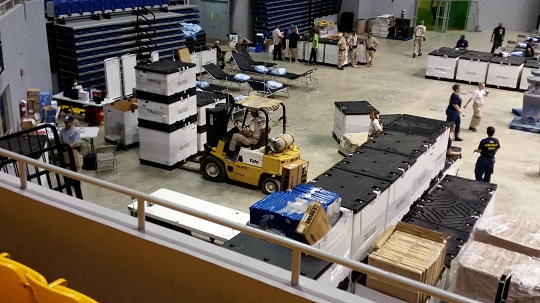At one point, a company had more finished goods than they needed. They had a lot more stock than what sales needed at the time.
There were talks between different parts of the supply chain, like PPIC, Warehouse, Logistics, and Sales. They talked about why there was too much stock.
Until they finally figured out that the extra stock was because sales were lower than the month before.
Does this answer make sense?
Before we answer that question, make sure you have also joined the scmguide telegram channel to get the latest updates from this blog and more information about supply chain management.
Table of Contents
Supply and demand are not in balance
Back to the example from above. When the sales data were looked at more closely, it was found that the sales for that month were still within the normal range for a given month. Yes, sales were lower that month than they had been the month before. But if they compare this number to the average monthly sales, it’s only 15% higher than the average monthly sales. During the same time period, sales changed by between 30% and 30% per month. This means that the 15% difference is still within the standard range for differences.
So how can there be too much stock?
As it turned out, the PPIC function did not notice these changes, so they did not plan their production to take these things into account. Even more interesting is that PPIC doesn’t seem to care about the numbers from the sales forecast that the company’s sales team has given out.
It’s even worse because they don’t have a goal or standard number of items they want to keep in stock. So the plan for production is made without taking these things into account.

Because of this, they have too much stock and have to pay more to store it in their warehouse. Not to mention that their operational safety is at risk because the finished goods stock in the warehouse has filled the aisle.
When you look at these circumstances, you can see that the overstock wasn’t caused by fewer sales but by too much production.
Because they don’t analyze and think about the real situation, they make bad decisions about the supply chain that hurt company profits directly.
You might also like:
- 6 Reasons Why People Development is Important in Supply Chain Management
- Everything You Need to Know About Plastic Pallets: Types, Uses and Benefits
It’s important to look at the state of the whole supply chain
In light of the above case, it is very important to analyze and think about the overall state of the supply chain before making a decision.
Klik dan dapatkan ebook dari scmguide.com ini!
"47 Kesalahan Umum yang Tidak Disadari dalam Manajemen Inventory"
Manfaat yang Anda Peroleh:
🔍 Insight tentang kesalahan yang sering terabaikan
🔧 Tips dan trik praktis untuk perbaikan
📚 Bahasa sederhana yang mudah dipahami
If we look at how things really are, deciding how much to make is easier to control than figuring out how much to sell.
It is hard, if not impossible, to get sales predictions that are 100% accurate. So, when the number of sales goes up and down, the only thing that can be done is to control the supply, in this case the amount of production, so that there isn’t too much stock like in the case above.
As much as possible, the supply chain management function must be able to keep up with both supply and demand. So, if sales go down, production must also go down, and if sales go up, production must also go up.
And in this case, one of the things that needs to change is how the supply chain functions think. Not all cases of too much stock are caused by wrong sales predictions. This often happens because there are too many goods on the market.
What causes there to be too much supply?
What leads to too much production is another interesting question. Why doesn’t production want to cut back on how much they make when it’s clear that sales are going down?
A lot of worry and fear. This is one reason why.
When the production plan is made based on feelings instead of facts, decisions are made based on the people who make them and what they care about.
When they are too afraid, they tend to be safe and make more stock than they need. Unfortunately, they don’t think about how the decision will hurt other parts of the supply chain.
This shows how important data is and how important it is to be able to turn data into information that can be used to make good supply chain decisions.

What about from the point of view of the person making the decision?
Everyone who makes decisions needs to know that there is always a risk with every choice. This is why it is important to manage these risks so that the risks taken are smaller, if not completely avoided.
But I think the decision should still be made if the possible gain or, at the very least, the size of the possible loss that can be avoided is much bigger than the risk that will be taken.
The most important thing here is to have plans for reducing risks that have been measured.
And a person making a decision must be willing to take that risk. Because if that doesn’t happen, any good idea won’t matter if the people in charge keep making decisions based on their fears instead of the facts and choose the wrong thing.
You might also like:
- 6 Effective Stocktaking Steps For More Accurate Results
- Why You Don’t Always Need to Check On Hand Stock
Conclusion
It is often hard to avoid having too much stock. But the most important thing is how you look at the situation and figure out what the real problem is. Is it because sales have dropped too much or because there are too many of them?
Strong data support is needed in this case because the data will be turned into information that will be used to make all decisions in the supply chain.
And from the point of view of Top Management, or the people who make decisions, their support and willingness to take calculated risks have a big impact on the way the organization moves forward.
Hope it helps!
If you think this article is helpful, share it with your coworkers and join the scmguide telegram channel to get updates from this blog. I also share there many more ideas about how to manage the supply chain. You can use any of the articles on this blog for whatever you want, even if it’s for money. You don’t have to give credit.

 by
by 


